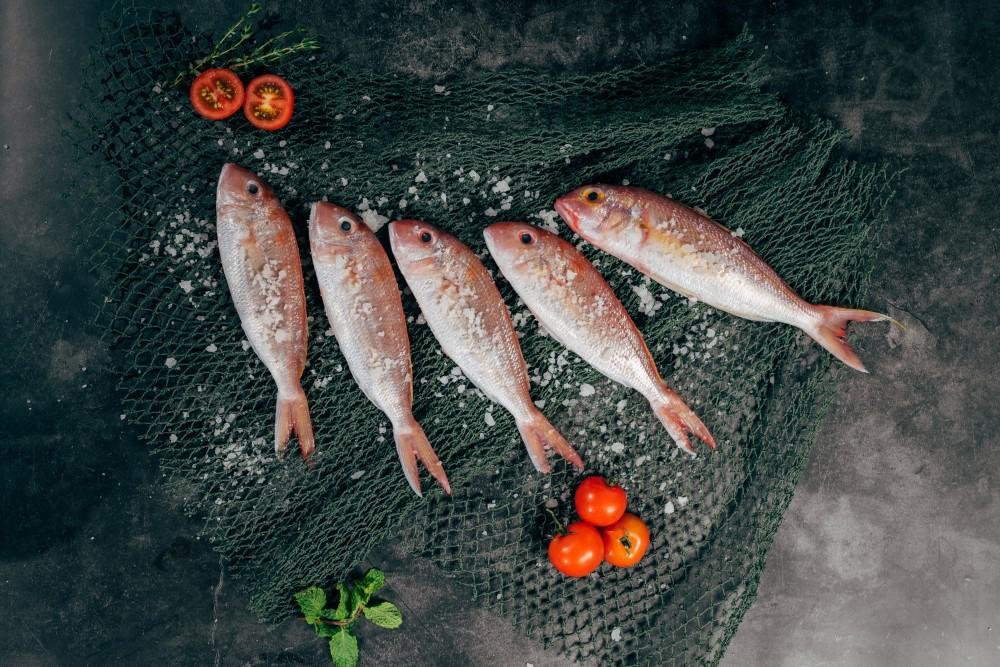Fish Are Loaded with Gasoline
In the past, we used to think tiny pieces of plastic, called microparticles or “microplastics”, stayed in a fish’s guts or liver. But research now clearly indicates the opposite.
With the body of marine life and humans full of plastic, it essentially starves cells to death.
When we inject plastic in the form of fish and fish derivatives (i.e., fish oil capsules, fish sauce, dried, wild, farmed), remember you are consuming a toxic concentration of gasoline. It doesn’t matter if the fish is raw (i.e., sushi), fresh or locally fish, IT IS FULL OF GASOLINE.
The journal Environmental Science & Technology estimates that Americans are eating, inhaling, and drinking at least 74,000 pieces of microplastic a year (Cox et al., 2019).
The numbers are actually much higher since no one is measuring the excess exposure of plastic derived from consuming the major food groups: meat, dairy, and refined grains (i.e., wheat, corn, soy).
There are very few standardized tests available to help consumers better understand their current exposure to microplastics and other gasoline derivatives.
I personally recommend using Great Plains Laboratory’s Toxic profile urine test to gain the best insight. It screens for the presence of 173 different toxic chemicals including gasoline derivatives, organophosphate pesticides, phthalates, benzene, xylene, vinyl chloride, pyrethroid insecticides, acrylamide, perchlorate, diphenyl phosphate, ethylene oxide, acrylonitrile, and many more.
This profile also includes a valuable marker to assess for cellular function and mutations of mitochondrial DNA. These mutations are caused by exposure to toxic chemicals, and can lead to serious diseases such as cancer, heart disease, chronic fatigue syndrome, chemical sensitivity, autism spectrum disorders, ADD/ADHD, autoimmune disorders, Parkinson’s disease, and Alzheimer’s disease.
The Bottom Line: There really is no safe fish to consume now. They are super polluted with gasoline and other toxic chemicals that are body do not gain any benefit, only harm.
In 2019, an international researcher team identified more than 900 chemicals associated with plastic packaging, including 16 linked to cancer, hormone disruption, and other health hazards (Groh et al., 2019).
Since plastic manufacturers safeguard their recipes as “proprietary”, and often do not even know for certain the final product of their chemicals’ reactions, they are extremely unlikely to disclose the true health hazards.
In pregnancy, studies have clearly demonstrated that plastic easily crosses the placenta to the fetus. In a presentation on microplastics at Rutgers University, nanoplastic particles (defined as smaller than a micron, about the width of a human hair) were tracked by a research team with fluorescent labels to see their movement.
When the team exposed rats to the particles (for only 2 weeks), the particles traveled from the lungs of pregnant rats to several tissues in the mother and to the fetus.
This supports earlier published studies showing that plastic does cross the placenta donated by women after their babies were delivered (Wick et al., 2010). Plastic does cause babies harm in utero.
AUTHOR
Dr. Payal Bhandari M.D. is one of U.S.'s top leading integrative functional medical physicians and the founder of SF Advanced Health. She combines the best in Eastern and Western Medicine to understand the root causes of diseases and provide patients with personalized treatment plans that quickly deliver effective results. Dr. Bhandari specializes in cell function to understand how the whole body works. Dr. Bhandari received her Bachelor of Arts degree in biology in 1997 and Doctor of Medicine degree in 2001 from West Virginia University. She the completed her Family Medicine residency in 2004 from the University of Massachusetts and joined a family medicine practice in 2005 which was eventually nationally recognized as San Francisco’s 1st patient-centered medical home. To learn more, go to www.sfadvancedhealth.com.

